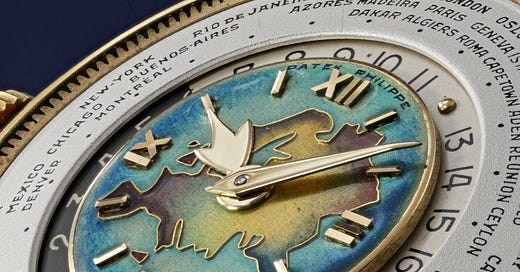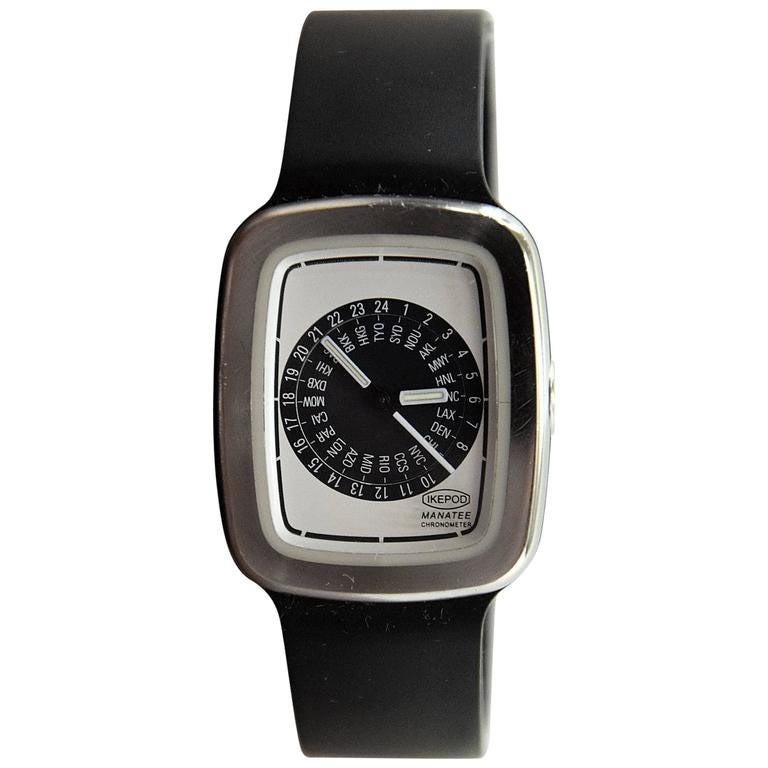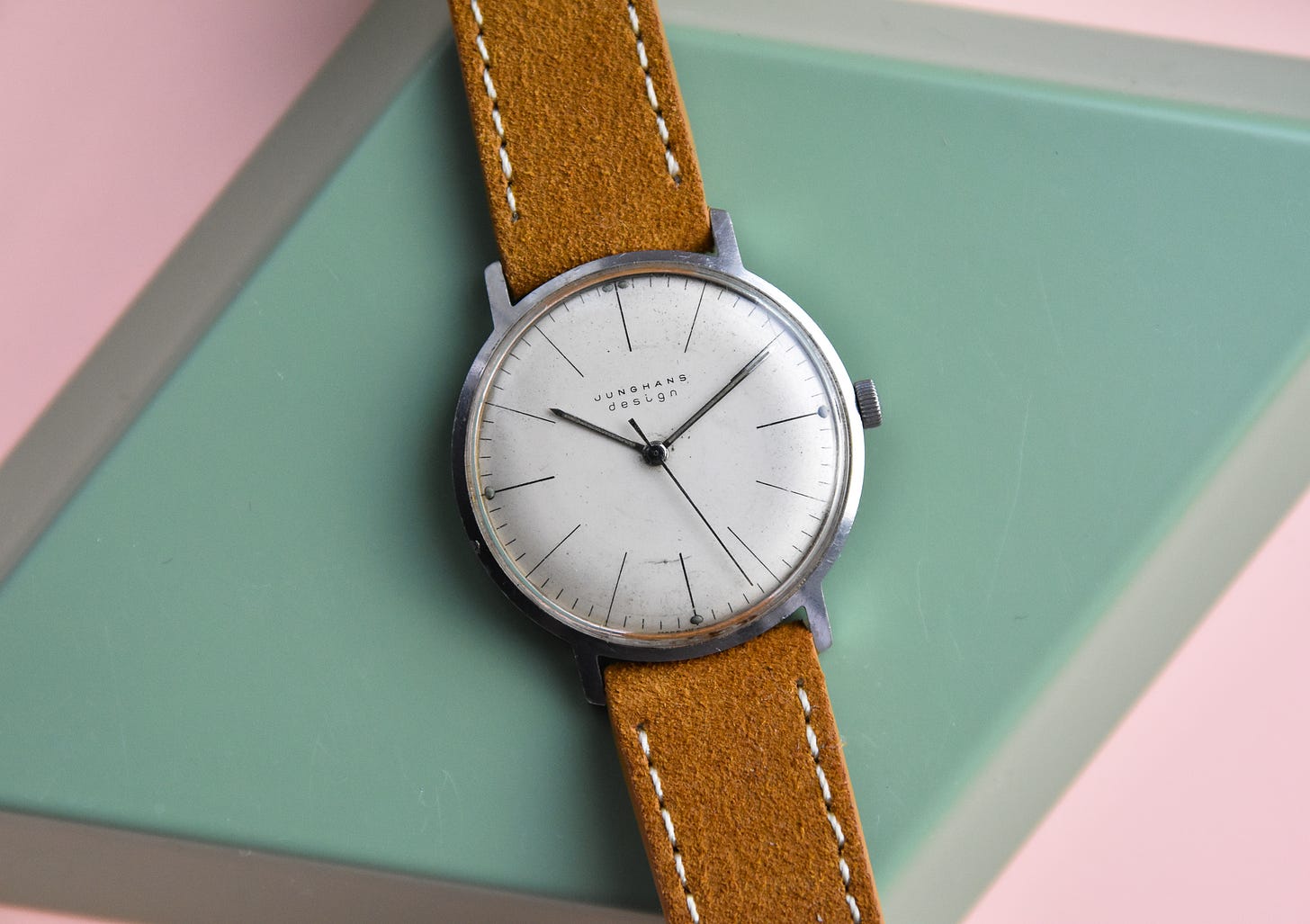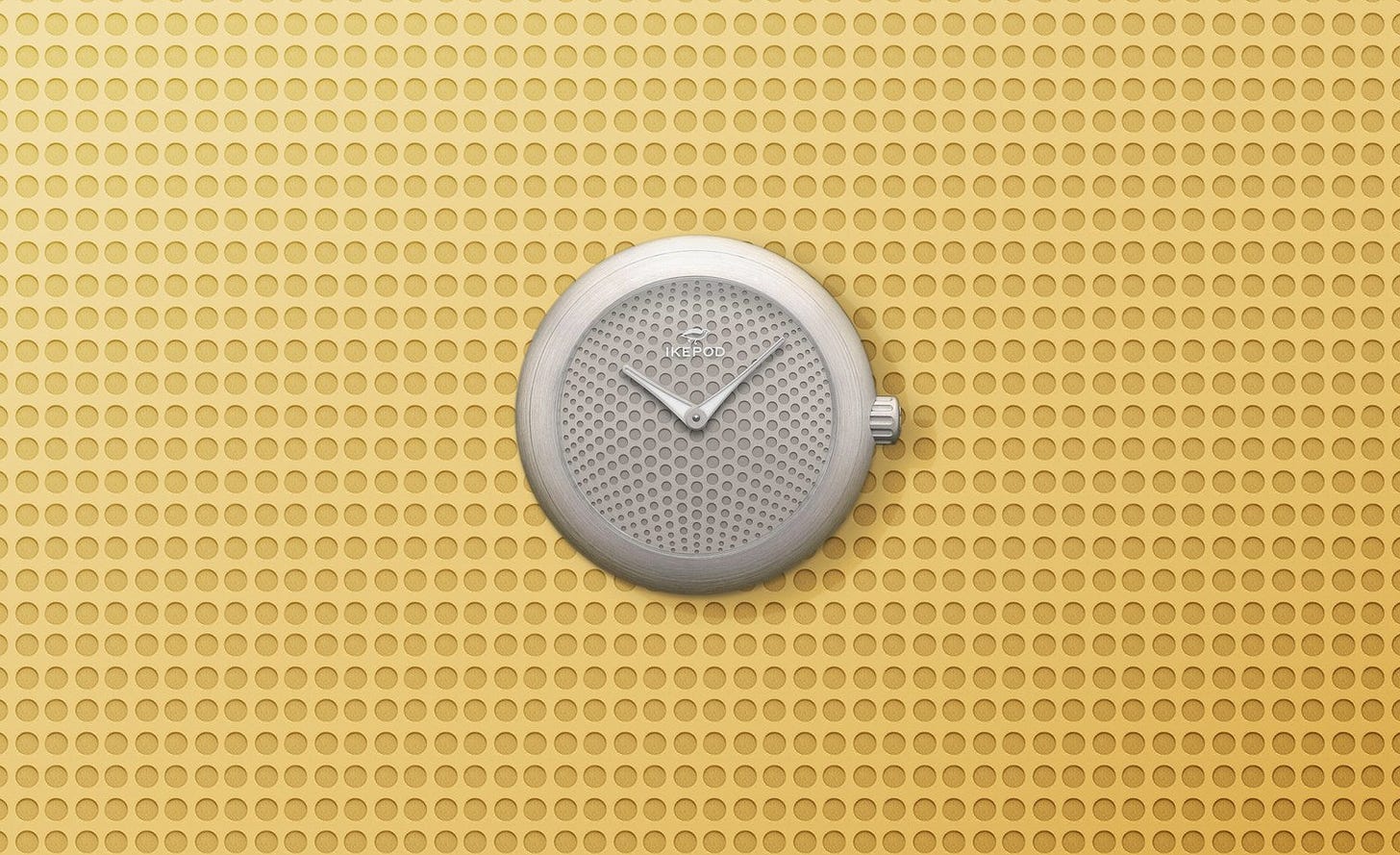Rescapement is a weekly newsletter about watches. To get it delivered to your inbox every Sunday, smash the subscribe button:
Coincidentally, I wrote a couple of design-focused pieces over the past couple of weeks. Over on H*dinkee, I wrote a “Watch of the Week” about a vintage Junghans Max Bill. Then on A Collected Man, I wrote about designer Marc Newson’s watch brand, Ikepod.
With the two pieces bouncing around in my mind, I found myself thinking about the connection between watches, art, and design. Bill was the original “form follows function” fanboy, a mid-century designer extolling the idea that the beauty of an object can come from its function. Newson, meanwhile, of a generation or two later than Bill, became a leader of the “design-art” movement, where the aesthetic reputations of his objects have long outstripped their practical purpose.
It’s not dissimilar to the journey watches as objects have taken over the past few decades, from functional tools to luxurious objects about as “pointless as any dog under 50 pounds.” (Ron Swanson’s opinion, not mine.)
I close the Ikepod piece by saying that:
At their best, Ikepod’s designs cause one to contemplate more profound questions, the types of inquiries that provocative art or design might also raise, such as: What is art anyway? When can watches be more than just watches, and when might watchmaking truly be considered art? And what makes for good design in watches?
And like any good piece of art or design, Ikepod’s creations often leaves one with more questions than answers.
I’ve always been reticent to posit that “watches are art,” perhaps because it’s such a well-worn cliche, or perhaps because some years ago I distinctly remember Goldberger answering firmly in the negative when asked “are watches art?”
But in 2021, that still leaves the question lingering: what are watches?
I don’t pretend to know the answer, but with visions of sugar-plumed designers dancing in my head, I’ve spent some time thinking about the nexus of watches, design, and art.
Perhaps the most satisfying answer — as much as it is one — I’ve gotten to comes from Marc Newson himself, through a 2012 New York Times Magazine profile.
Newson relays his “origin story,” the thing that got him into thinking about design objects in the first place, all those years ago:
“In some sense [Newson’s career] can be traced back to a nutmeg mill that Newson found in his mother’s kitchen 36 years ago. The nutmeg mill came from the catalog of William Bounds, an American company that has been turning out kitchen accessories since 1963. Inspecting it, Newson was amazed to find a tag line that the founder, Bill Bounds, flush with enthusiasm for the nascent American space program, engraved on the base: ‘Made on the Third Planet From the Sun.’
‘I hadn’t considered there could be an emotional entity responsible for an object,’ Newson said. ‘Objects were made by machines; machines don’t have emotions. But the nutmeg grinder had wit and humor, and the phrase on the base gave it a kind of lightness that showed the designer’s confidence and said the person who conceived it was proud enough to imbue it with his personality. It was just so cool.’”
To me, this is as satisfying an answer I’ve found to the question “what are watches,” or more accurately, what do I expect of watches?
I expect an object that evokes an emotion, that has a personality, and that has a perspective on the world.
Max Bill certainly had a perspective. “Form follows function,” and all that. So does Ikepod. Even modern Rolex has a strong perspective on watches and their role in the world, something like executing luxury precision engineering at scale.
Is this art? Honestly, I have no idea. Certainly, having personality and perspective is a necessary condition of art, but I’m not willing to go so far as to deem it sufficient.
But honestly, I don’t think it really matters. Another reason I’ve never really liked the are watches art? question is because it demands that watches be taken more seriously than they need to be.
Newson was originally drawn to that nutmeg mill because it had wit and humor. I love watches like that, too.
A couple excerpts from those articles over on H and ACM:
Why I still love my Junghans Max Bill
“Back in the more innocent times of 2016, a few years and many fewer watches ago, I was just a young graduate student with big dreams and small pockets. And I had my heart set on the Junghans Max Bill.
Rolex had always felt too ... Rolex. It fit on the wrists of suave urbanites like Roger Federer or a cashmere-clad Ben Clymer, but perhaps not on mine. The clean, minimal aesthetic of the Max Bill — the same aesthetic perfected by all those direct-to-consumer brands following you around the internet trying to hawk furniture, mattresses, and juicers — immediately spoke to me, dutiful millennial that I was.
But, unlike those Instagram-advertising internet pests, the Junghans Max Bill immediately felt like something more. Soon enough, I tried one on and learned about “winding” a watch. Something you actually had to touch to get going, and my movements powered its movements? It felt less pest and more symbiosis, like Nemo and that Amnemonemomne.”
👉 Read the full “Watch of the Week” on Hodinkee
Ikepod: Design and the art of time
“Today, Ikepod holds an interesting position in the watch industry.
What can now be called ‘vintage’ Ikepod watches, from the brand’s first lives from 1994 through 2012, are increasingly appreciated by collectors, appearing more frequently at auction, and surpassing their estimates when they do. In the past year, Wright Auction sold a solid-gold Ikepod Hemipode Chronograph from 1998 for nearly $20,000; Phillips auctioned a KAWS x Ikepod Horizon from 2012 for nearly $40,000.”
Of course, auction results won’t do as well as a GQ cover, and Ikepod had its modern en vogue moment in May 2020, when Kanye West wore a vintage gold Hemipode on the cover of American GQ. Previously, Kanye has referred to the Ikepod as his “favourite watch”, directly referencing its bold circular cases as the reason for its appeal.
Richard Wright, the founder of leading modern and contemporary design auction house Wright auction, pointed to distribution as the primary problem that led to Ikepod folding. But in a modern world driven by the internet and social media, where something bold and different stands out amid a two-dimensional doomscroll, suddenly Ikepod’s designs feel as relevant as ever.
👉 Read Ikepod: Design and the art of time on A Collected Man
Through the Wire
🎨 Can we compare art and watches? ACM with some timely insights:
“[Art consultant Todd] Levin points us to Fashion, an essay written by Georg Simmel, in which Simmel dissects the psychology behind collecting and fashions in an incredibly insightful way, especially considering it was written in 1895. Simmel concluded that there were two basic reasons why people collect things. Firstly, it was to be part of a group, to signal to the world that they belong to a certain class, social set, or cultural clan. The other reason was to set themselves apart from everyone else; to show that they are unique and singular in their thoughts and outlook. Simmel talks about the fine balance that we all find between these two, as we surround ourselves with the various objects that we amass. While Simmel was only talking about fashion, his theories can be extended to the worlds of watch, art, or any other type of collecting.”
🚙 ACL — Here’s a stupid question: Why is everything so huge? Will things being small ever regain popularity?
Historically this has applied to watches too, though (often small) heritage-inspired watches seem to be all the rage nowadays. So to Michael, I say: there’s hope. Am I also linking this because he recs Rescapement as one of his favorite ‘sletters?…I’m not above it.
🏐 Check out this Koons x Ikepod “Cannonball” watch over on Wind Vintage. 🏎Ryan Gosling talks to FT about his new TAG Heuer deal. 🖐 SJX goes in-depth with the FPJ “Francis Ford Copolla” for Only Watch. 💳 And John Reardon on the Patek Desk Clock for Only Watch: Buy it. 🍃 Speaking of the 3rd planet from the sun: Nature Conservancy’s photos of the year.
Rescapement is a weekly newsletter about watches. To get it delivered to your inbox every Sunday, smash the subscribe button:









